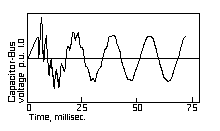DIGI Series Phase Converters
For CNC, EDM, Computers, Lasers, and other voltage sensitive equipment. 3-Phase, 3-wire Delta output voltage is internally regulated (balance ±5%). Does not incorporate extraneous capacitor/relay-switching devices which can damage CNC control components.
| Converter Model | Rotary kVA @ 1/HP | Spindle HP @ 5% Voltage* | Maximum Switch Amps |
|---|---|---|---|
| DIGI 184 | 5 | 2 hp | 30 |
| DIGI 215 | 10 | 3.5 hp | 60 |
| DIGI 254 | 15 | 5 hp | 80 |
| DIGI 256 | 20 | 8 hp | 100 |
| DIGI 286 | 30 | 12.5 hp | 125 |
| DIGI 324 | 40 | 18 hp | 150 |
| DIGI 326 | 50 | 24 hp | 200 |
| DIGI 364 | 60 | 30 hp | 250 |
| DIGI 324x2 | 80 | 40 hp | 300 |
“A CNC is the machine-tool equivalent of buying a Farrari. You wouldn’t think of draining the gas out of a farm tractor to put into a highly-tuned sports car, would you? Electricity is fuel. You wouldn’t think people would shop around for a home-made or non-CNC rated phase converter to run their new “Ferrari” but we witness this frequently. Those who do so will only frustrate production schedules and put their machine warranty at risk.”
-Gary Werner, founder, GWM Corporaiton
High Voltage Problems
Most single phase supply lines produce 240 to 250 volts. A comparable 3-phase voltage is then produced by your DIGI-Series phase converter. Many CNC machines are manufactured for 208 or 220 volt service only with no internal provisions for operation on higher voltages. To correct this problem, a “buck” transformer is installed ahead of the converter. Measure your line-to-line voltage with a digital voltmeter—a low-priced one may be purchased at any discount electronics store—and calculate the difference between your actual voltage and the machine’s recommended operating voltage. A “buck” transformer will eliminate the difference, and 3-phase voltages will be produced based on the lowered voltage.
Special Converter Sizing for CNC with Regenerative Spindle Braking
Among machine manufacturers, the quest for speed has spawned some electrical headaches. Many new CNC lathes operate the spindle motor’s electronic drive in a regenerative mode. The spindle motor temporarily functions as a generator to brake the spindle for the next operation.
This works fine on a utility-supplied 3-phase line, but tends to overdrive any rotary phase converter in the system. 3-phase voltages may reach the upper threshold of the CNC, and set off alarms which prevent machine operation.
To ensure trouble-free operation, these CNC require a converter nearly twice the normal machine rating. For instance, a 12.5 HP Okuma Crown operates well on the DIGI 324—rather than the 286—rotary. The Mazak 25 HP Super Quick Turn uses two DIGI-324 models. Careful application will permit maximum machine efficiency while maintaining the GWM DIGI-Series’ desired ±5% voltage accuracy.
One indication of “regen” capability on machines of recent manufacture (usually a CNC lathe) is an inordinately high electrical kVA rating—i.e. a machine with a 5 HP spindle motor and a rating of 14-18kVA. If you are not sure of the correct selection for your particular machine, please consult GWM’s customer service department with the full-load amp, operating voltage, kVA rating, and spindle horsepower of your machine.
Harmful Effects of Capacitor Switching
Some phase converter manufacturers promote Automatic Voltage Regulation (AVR) on their products, and we have warned them of the adverse effects of this method (see an extended treatment of this topic in “Understanding and Selecting a Phase Converter”). The AVR is a capacitor-switching device used to regulate voltages for CNC but includes no means to prevent equipment damage. The diagram below shows a result of capacitor switching within a confined system. In the abstract (Electrical World, June 1989, page 6) the author states that:
Switching of capacitors is the most common source of transient voltages on many systems and is second only to lightening on many others. . . . Note the fast-front surge and the oscillatory transient that follows . . . transformer failures have been documented . . . linked to excessive phase-to-phase transients and transformer resonance. (Emphasis added)
—”Capacitor Switching and its Effect on the Power System,” from Capacitor Application Considerations by W. Edward Reid.

